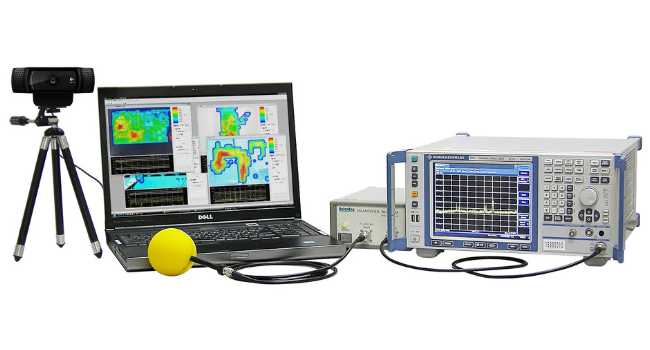Basic specifications:
– Counter sampling rate is fixed at 250 MSa/sec
– Hysteresis level (defined further below) is ~1 division on the smallest vertical ranges (< 5 mV) and about 0.3 divisions (with Noise Reject Off) ir 0.7 divisions (with Noise Reject on) in higher vertical scales (>- 5mV).
Further Details:
DS1000Z digitize the sampling data, and using Hysteresis comparator to make the trigger stable
Schematic diagram of DS1000Z Hysteresis comparator when using rising edge trigger
1. The red part won’t be counted when using hysteresis comparator, because it doesn’t achieve the range.
2. The triangle in the diagram is the sampling data after digitization, we can see it by setting dot type in display menu.
3.The sample rate of DS1000Z counter is 250MSa/s (this is same with different model). When higher speed input signal is connected, the ‘peak’ may not achieve the range of hysteresis or the signal may be too undersampled to be properly measured, so the counter’s value can be incorrect.
4. The range of hysteresis will change with vertical scale, so when input a low signal, we need to set the vertical scale lower for best results.
5. It’s also important to adjust the trigger level to the middle of the signal so that more ‘peaks’ can be counted beyond the hysteresis level.
Examples using dots display mode for clarity:
Input:50MHz/500mVpp sine wave,Vertical Scale:100mV,Trigger Level:0V
Input:50MHz/500mVpp sine wave,Vertical Scale:500mV,Trigger Level:0V
Input:50MHz/200mVpp sine wave,Vertical Scale:100mV,Trigger Level:0V
Input:50MHz/125mVpp sine wave,Vertical Scale:100mV,Trigger Level:0V
Input:50MHz/110mVpp,Vertical Scale:100mV,Trigger Level:0V,AUTO
High speed distortion in vector mode:
The high speed signal will distortion with 250MSa/s sample rate
The Frequency measurement in the measurement menu for each channel is software based, but can sometimes be more accurate because it utilizes the displayed data to make the calculation. The displayed data can be up to 1 GSa/sec making some high frequency measurements easier.
Home / Knowledge Base / Knowledge Base Digital Oscilloscopes / Knowledge Base DS1000 Series / DS1000Z Counter Technical Details
DS1000Z Counter Technical Details
Posted on: December 16th, 2020 by Doug Lovell
Product Categories
AC Power Supplies / Frequency ConvertersDC Power Supplies
DC Electronic Loads
Test & Measurement
Safety Testers
EMC
Soldering Irons / Test Tools
Manufacturers
Rental

Service & Support
AboutContact
Newsletter
Service Returns Form
Returns Policy
Terms and Conditions
Privacy Policy
Shipping & Delivery
My account


Copyright © 2024. All rights reserved by Telonic Instruments Ltd
Website operated by Jumping Giraffe Ltd. Jumping Giraffe Ltd is not responsible for content on external websites.
































































































 FREE SHIPPING £75+
FREE SHIPPING £75+
 CELEBRATING 50+ YEARS
CELEBRATING 50+ YEARS
 PRICE MATCH GUARANTEE
PRICE MATCH GUARANTEE

